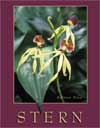1. Why do some plants produce poisons while others are edible and useful?
Are there large carnivorous plants? How and why do plants respond to their environment?
What is the future of tropical rain forests? What can be done about pollution
and other environmental problems? 2. Human populations have increased dramatically in the past few centuries,
and the disruption of the balance of nature by the activities directly or indirectly
associated with the feeding, clothing, and housing of billions of people threatens
the survival of not only humans but many other living organisms. 3. We are totally dependent on green organisms because they alone can
convert the sun's energy into forms that are usable by, and vital to the very
existence of, animal life. 4. We largely take plants and plant products for granted. Animals, animal
products, many luxuries and condiments, and other useful substances, such as
fibers, lumber, coal, medicines, and drugs, either depend on plants or are produced
by them. 5. To ensure human survival, all persons soon may need to acquire some
knowledge of plants and how to use them. Plants will undoubtedly play a vital
role in space exploration as portable oxygen generators. 6. Teams of scientists are interviewing medical practitioners and herbal
healers in the tropics to locate little-known plants used by primitive peoples
before the plants become extinct. 7. Botany, the study of plants, apparently began with Stone Age peoples'
practical uses of plants. Eventually, botany became a science as intellectual
curiosity about plants arose. 8. A science involves observation, recording, organization, and classification
of facts. The verifying or discarding of facts is done chiefly from known samples
through inductive reasoning. The scientific method involves specifically following
a routine series of steps and generally assuming and testing hypotheses. 9. The microscope has had a profound effect on studies in the biological
sciences and led to the discovery of cells. 10. Plant anatomy and plant physiology developed during the 17th century.
J. B. van Helmont was the first to demonstrate that plants have nutritional
needs different from those of animals. During the 17th century, Europeans engaged
in botanical exploration on other continents and took plants back to Europe. 11. During the 18th century, Linnaeus produced the elements of our present
system of naming and classifying plants. 12. During the 19th century, plant ecology, plant geography, and plant
morphology developed, and by the beginning of the 20th century, genetics and
cell biology became established. Much remains yet to be discovered and investigated. | 


 2003 McGraw-Hill Higher Education
2003 McGraw-Hill Higher Education